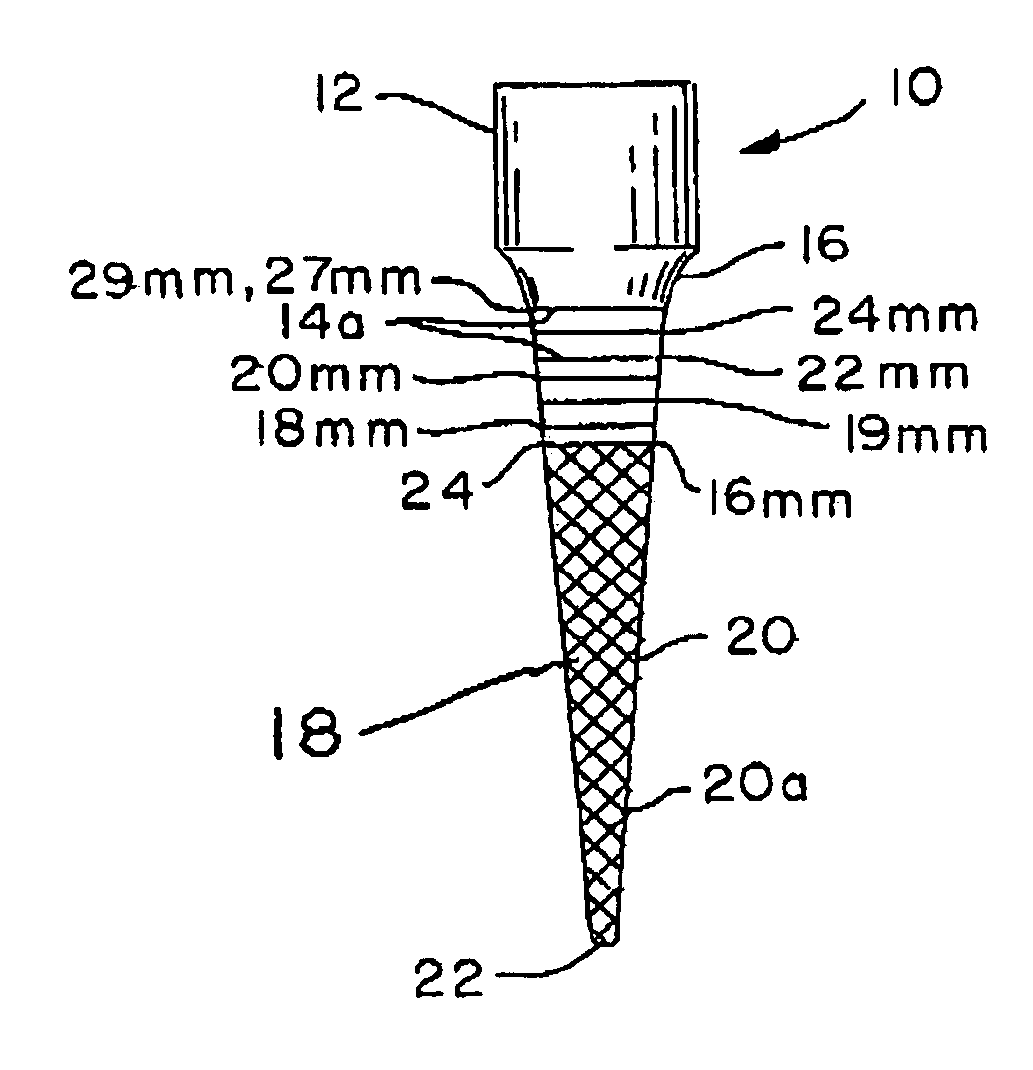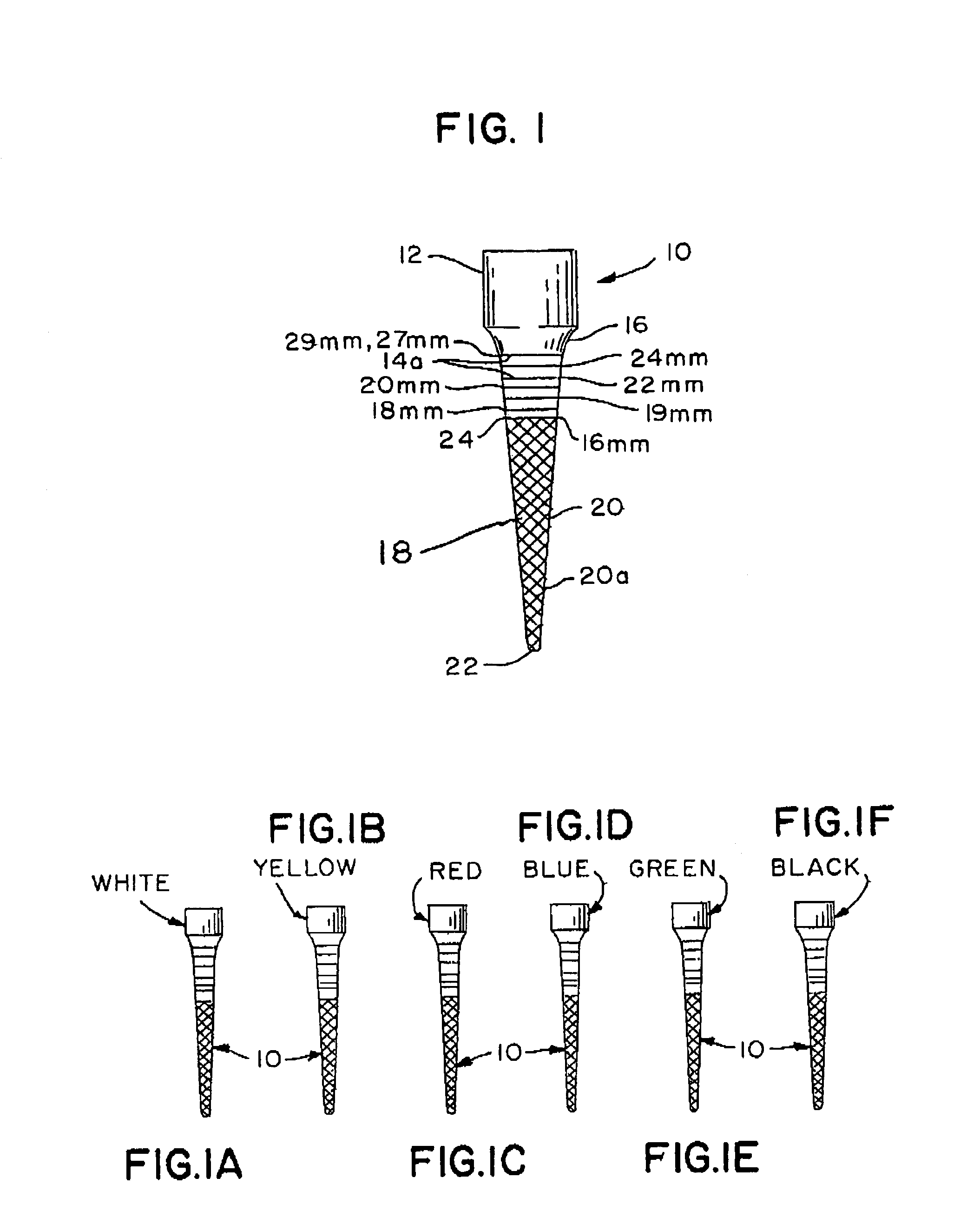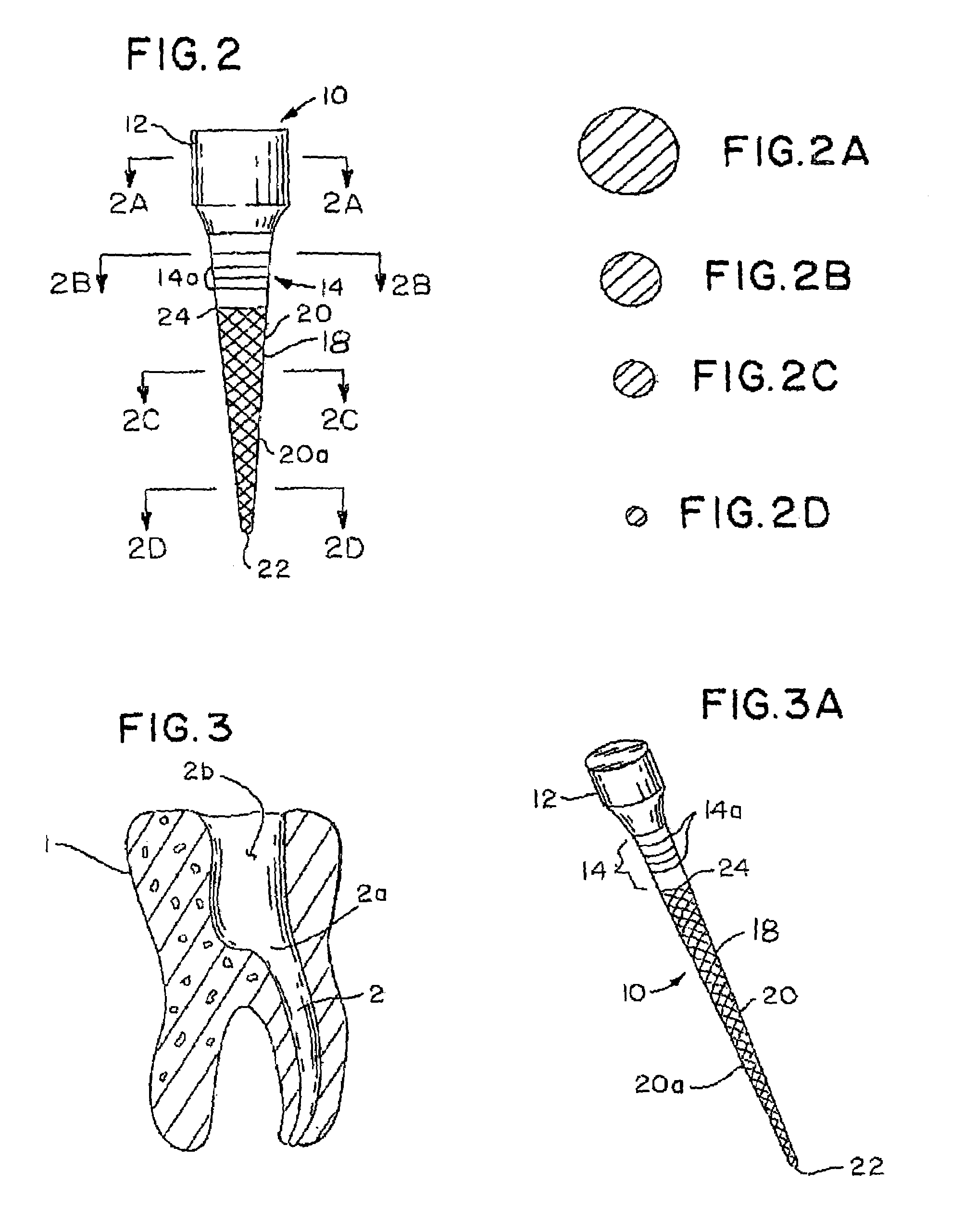Integral gutta percha core/cone obturation technique
a gutta percha core and core technology, applied in the field of endodontics, can solve the problems of obstructing the view of the delivery process, obstructing the delivery process, and abandoning the technique, and achieve the effect of facilitating its use in the endodontic procedure and reducing leakag
- Summary
- Abstract
- Description
- Claims
- Application Information
AI Technical Summary
Benefits of technology
Problems solved by technology
Method used
Image
Examples
Embodiment Construction
[0064]As shown in the drawing FIGS. 1–9, the integral, one piece gutta percha core / cone 10 has three distinct structural components all produced from the same material, such as gutta percha.
[0065]The top (proximal end) of the core / cone 10 comprises the handle section 12. The handle 12 is machined to. precisely fit the core / cone TRANSPORTER™ delivery vehicle 4 as shown in FIG. 5B. This precise fit prevents the handle 12, and therefore the core / cone 10, from rotating or shifting when taken to and inserted into the root canal 2 of the prepared tooth 1.
[0066]Core / cone 10 is inserted within root canal 2 so as to seal the entire portion below its upper orifice 2a, above which includes upper chamber 2a of tooth 1, which is filled with tooth colored resin and related crown post work (not shown).
[0067]The handle 12 allows the TRANSPORTER™ delivery vehicle 4 to perform its functions, among which is to facilitate the placement of the one piece integral gutta percha core / cone 10 into a root can...
PUM
| Property | Measurement | Unit |
|---|---|---|
| lengths | aaaaa | aaaaa |
| length | aaaaa | aaaaa |
| lengths | aaaaa | aaaaa |
Abstract
Description
Claims
Application Information
 Login to View More
Login to View More - R&D
- Intellectual Property
- Life Sciences
- Materials
- Tech Scout
- Unparalleled Data Quality
- Higher Quality Content
- 60% Fewer Hallucinations
Browse by: Latest US Patents, China's latest patents, Technical Efficacy Thesaurus, Application Domain, Technology Topic, Popular Technical Reports.
© 2025 PatSnap. All rights reserved.Legal|Privacy policy|Modern Slavery Act Transparency Statement|Sitemap|About US| Contact US: help@patsnap.com



